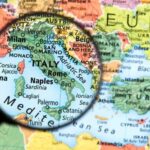Italy, renowned for its rich history, stunning landscapes, and delectable cuisine, has undoubtedly been impacted by the ongoing COVID-19 pandemic. As the world grapples with the challenges posed by the virus, it is essential to understand the current travel situation in Italy.
This article aims to provide a comprehensive overview of the travel restrictions and requirements in place for those planning a trip to Italy. By staying informed and up to date with these guidelines and regulations, travelers can ensure a safe and smooth journey to this beloved European destination.
The COVID-19 pandemic has prompted governments worldwide to implement strict measures to protect public health, including travel restrictions. Italy, as one of the countries significantly affected by the virus, has instituted various measures aimed at controlling its spread.
It is crucial for travelers planning a visit to Italy to familiarize themselves with these restrictions before embarking on their journey. Staying informed about entry requirements, quarantine protocols, and testing measures will greatly contribute to ensuring both personal safety and compliance with local regulations.
Given the constantly changing nature of the pandemic and evolving guidelines from international health organizations and travel authorities, it is imperative for travelers to maintain awareness of any updates or changes in travel advisories related to Italy. By keeping abreast of travel advisories issued by their home countries or reputable sources, individuals can make informed decisions regarding their travel plans.
In addition, being aware of different classifications like green zones or yellow zones introduced by authorities provides valuable insight into regional variations within Italy itself.
COVID-19 Entry Requirements for Italy
COVID-19 Testing and Screening Measures
Before planning a trip to Italy, it is crucial to familiarize yourself with the mandatory COVID-19 testing and screening measures required for entry into the country. Italy has implemented these protocols to ensure the safety and well-being of both visitors and residents.
Currently, all travelers entering Italy must provide a negative result from a molecular or antigenic COVID-19 test taken no more than 48 hours before arrival. The specific types of tests accepted may vary, so it is essential to check the latest guidelines from Italian authorities or consult your airline or travel agent for accurate information.
In addition to pre-departure testing, some airports in Italy conduct random rapid antigen tests on arriving passengers. These post-arrival tests are free of charge and aim to screen travelers randomly as an additional precautionary measure.
Quarantine Protocols upon Arrival
Upon arrival in Italy, travelers may be subject to quarantine measures depending on their country of departure and classification. At the time of writing this article, passengers arriving from countries classified as “high-risk” by the Italian government are required to undergo a 10-day quarantine period. However, exemptions may apply for fully vaccinated individuals or those who have recovered from COVID-19 within the past six months.
It’s important to note that quarantine requirements can change frequently based on the prevailing epidemiological situation. Travelers should regularly monitor official updates and consult with local authorities for precise information regarding quarantine protocols.
During the quarantine period, individuals are expected to stay at their accommodation and avoid contact with others outside their travel bubble. Failure to comply with these measures may result in fines or other legal consequences. Some regions within Italy may have additional restrictions or tighter quarantine regulations compared to others, so it is advisable to research specific regional guidelines if you plan on traveling within the country during or after your quarantine.
Important Considerations
It is crucial to keep in mind that the COVID-19 entry requirements and quarantine protocols for Italy can change rapidly in response to evolving circumstances. Travelers are advised to stay informed about the latest updates and guidelines issued by Italian authorities, as well as consult official government sources or reputable travel websites before embarking on their journey.
By staying up to date with the most current information, travelers can ensure they are prepared for their trip and comply with all necessary requirements. Remember to check for any additional measures implemented by airlines, airports, or specific cities within Italy that may affect your travel plans.
Prioritizing safety and adhering to all guidelines will not only protect your health but also contribute to the overall effort of mitigating the spread of COVID-19 in Italy and around the world.
Travel Advisory Updates and Classification for Italy
When planning a trip to Italy, it is crucial to stay informed about the latest travel advisories and classifications issued by various countries. These advisories provide important guidance and recommendations on whether or not it is safe to travel to Italy, as well as any specific precautions that should be taken. Understanding these updates can help travelers make informed decisions and ensure their safety during their visit.
Many countries issue travel advisories that classify destinations into different categories based on the risk level of COVID-19 transmission. These classifications often use color-coded systems such as green, yellow, orange, or red to indicate the severity of the situation in a particular region. It is important for travelers to pay attention to these classifications as they may impact entry requirements and quarantine protocols.
Renowned health organizations and travel authorities also provide valuable advice and recommendations regarding travel to Italy. For example, the World Health Organization (WHO) regularly updates its travel advice for different countries, including Italy. Their guidance often includes general precautions such as wearing masks, practicing good hand hygiene, and maintaining physical distancing.
It is recommended that travelers consult official government sources and reputable travel websites for the most up-to-date information on travel advisories and classifications for Italy. These sources will provide the most accurate and reliable information directly from the authorities responsible for setting these guidelines. By staying informed about the latest updates and recommendations, travelers can better prepare themselves for their trip to Italy and ensure a safe and enjoyable experience.
| Country | Travel Advisory Classification | Recommendations |
|---|---|---|
| United States | Level 4: Do Not Travel | Avoid all non-essential travel to Italy due to high COVID-19 cases. |
| United Kingdom | Amber List | Travel to Italy is allowed, but quarantine and testing requirements apply. |
| Canada | Avoid non-essential travel | Avoid non-essential travel to Italy due to the risk of COVID-19. |
Entry Restrictions
Categories of Permitted Travelers
Italy has implemented various entry restrictions in response to the ongoing COVID-19 pandemic. However, there are certain categories of individuals who are currently allowed to travel to Italy. These categories include Italian citizens and residents, European Union (EU) residents, and essential travelers.
Italian citizens and residents have the right to enter Italy without any specific limitations or requirements. They may travel freely within the country but are advised to follow local guidelines and protocols to ensure their safety and the safety of others.
EU residents, including those from Schengen Area countries, are also permitted to enter Italy for any reason, such as tourism or business purposes. However, they must comply with specific entry requirements, including providing a negative COVID-19 test result or undergoing testing upon arrival.
Essential travelers, such as healthcare professionals or workers employed in critical sectors, are allowed entry into Italy. However, they may be subject to additional screening measures and are required to present valid documentation or permits proving their essential travel status.
Exceptional Circumstances and Considerations
In addition to the aforementioned categories, there are exceptional circumstances under which individuals may be allowed to travel to Italy for urgent reasons. These circumstances include medical emergencies or family reunification.
Travelers seeking entry for urgent medical treatment must provide appropriate documentation from a recognized medical institution in Italy detailing the need for immediate care unavailable in their home country. They may also need to fulfill additional health requirements specified by Italian authorities.
Family reunification is another valid reason for traveling to Italy during these restrictions. Individuals who need to join immediate family members residing in Italy can apply for an entry visa or permit through the Italian Embassy or Consulate in their home country.
It is important that travelers falling under these exceptional circumstances carefully review the specific requirements and procedures necessary for obtaining permission from Italian authorities before planning their trip.
COVID-19 Travel Requirements Within Italy
Italy has implemented various travel requirements and restrictions within the country to manage the spread of COVID-19. These measures apply to both domestic and international travelers and may vary depending on the region or city within Italy. It is crucial for travelers to be aware of these requirements before planning their trip.
To begin with, it is important to note that Italy has a color-coded system in place to classify regions based on their COVID-19 risk level. The classifications include white zones (low risk), yellow zones (moderate risk), orange zones (medium-high risk), and red zones (high risk). Each classification comes with its own set of travel restrictions and measures.
In general, there are several travel requirements that apply across all regions in Italy. These include wearing face masks in public spaces, practicing social distancing, and following any specific guidelines or restrictions issued by local authorities.
Restrictions related to movement between regions or cities may also be in place, particularly for regions classified as red or orange zones. Travelers may be required to provide a self-declaration form stating the necessity of their travel or justification for entering/leaving certain areas.
Moreover, some cities or regions may implement additional measures such as curfews or limitations on certain activities based on their local situation. Therefore, it is crucial for travelers to stay updated with the latest information from official government sources and follow any guidelines provided by local health authorities.
| Travel Requirement | Description |
|---|---|
| Face Masks | Wearing face masks is mandatory in public spaces. |
| Social Distancing | Travelers must maintain a physical distance of at least one meter from others. |
| Self-Declaration Form | Some regions may require a self-declaration form stating the necessity of travel. |
It is important to note that these requirements and restrictions are subject to change as the COVID-19 situation evolves. Travelers should regularly check for updates from official sources, including the Italian Ministry of Health and the local health authorities in their intended destination within Italy. By staying informed and prepared, travelers can ensure a safe and smooth journey within Italy.
Quarantine Measures and Testing Protocols
As part of the measures to control the spread of COVID-19, Italy has implemented quarantine measures and testing protocols for travelers arriving in the country. Upon arrival, all travelers must adhere to mandatory quarantine requirements. The duration of the quarantine period may vary depending on several factors such as the traveler’s country of origin and whether they have been vaccinated or not.
The current guidelines state that travelers from countries classified as “high-risk” are required to self-isolate for a period of 5 days upon arrival. These individuals must also undergo testing before entering Italy and then again at the end of their quarantine period. It is important to note that these regulations can change, so it is crucial for travelers to stay updated with the latest guidelines from official government sources.
During the quarantine period, individuals are expected to stay at their accommodation and limit their contact with others as much as possible. They are also required to fill out a digital form called a “Passenger Locator Form” where they provide details regarding their accommodation and contact information.
Testing protocols are an essential part of Italy’s strategy for managing travel-related risks during the pandemic. Travelers may be subject to testing both during and after their quarantine period, depending on their circumstances. Testing is typically performed through molecular or antigen tests, and results are usually available within a short timeframe.
It is important for travelers planning to visit Italy to factor in these quarantine measures and testing protocols when making their travel plans. By understanding and complying with these requirements, individuals can contribute to efforts in controlling the spread of COVID-19 while enjoying their time in this beautiful country.
Vaccination and Immunity Passport Policies
Italy has implemented policies regarding COVID-19 vaccination certificates or immunity passports for visitors entering the country. It is important for travelers to understand Italy’s stance on these documents, as they may provide certain exemptions or benefits when it comes to travel restrictions and testing requirements.
Italy currently recognizes COVID-19 vaccination certificates from approved vaccines. Travelers who have been fully vaccinated with a vaccine approved by the European Medicines Agency (EMA) or listed by the World Health Organization (WHO) are generally exempt from quarantine requirements upon arrival in Italy. However, it is crucial to note that this exemption applies only if the traveler received the full course of vaccination at least 14 days before arrival.
In addition to vaccination certificates, Italy also recognizes COVID-19 immunity passports for individuals who have recovered from a previous COVID-19 infection. These immunity passports should include documentation of a positive molecular or antigen test result taken within a specific timeframe, usually between 180 and 240 days prior to travel. Travelers with immunity passports are typically exempt from quarantine requirements.
It is essential for travelers to carry their vaccination certificates or immunity passports while traveling to Italy and present them when required, such as during border control checks or hotel check-in procedures. These documents serve as proof of vaccination status or previous infection and can help facilitate smoother travel experiences.
However, it is important to note that even with vaccination certificates or immunity passports, other entry requirements such as pre-departure testing may still be necessary depending on the current regulations in place. Travelers should check the latest guidelines provided by Italian authorities and consult official government sources or reputable travel websites for the most up-to-date information on travel restrictions and requirements.
Exceptions and Exemptions
While travel restrictions may be in place, there are certain exceptional circumstances under which individuals may be allowed to travel to Italy for urgent reasons. These exceptions apply to situations such as medical emergencies or family reunification. If you find yourself in one of these critical situations, it’s crucial to understand the necessary documentation and procedures for obtaining permission to enter the country.
For medical emergencies, individuals seeking urgent medical treatment in Italy must provide compelling evidence from a healthcare professional or institution stating the need for immediate care that cannot be adequately provided in their home country. This evidence should outline the specific medical condition, the urgency of treatment, and confirmation of availability in Italian healthcare facilities. It is also important to ensure that you have all necessary medical documentation translated into Italian.
Family reunification is another circumstance where entry may be permitted despite travel restrictions. Those seeking entry for this reason must provide proof of their relationship with an Italian citizen or resident and demonstrate that essential needs require their presence in Italy. Examples of essential needs can include caring for elderly or dependent family members or legal requirements tied to familial responsibilities.
In both cases, it is advised that individuals contact the nearest embassy or consulate of Italy in their home country before making any travel arrangements. These diplomatic missions will provide guidance on the required documents and procedures for obtaining an exception. It’s important to note that being granted an exception does not exempt travelers from complying with COVID-19 testing and quarantine protocols upon arrival.
Traveling during these times requires careful planning and understanding of the current regulations. It is crucial to consult official government sources and reputable travel websites for the most up-to-date information on travel restrictions and requirements before making any decisions. As the situation evolves rapidly, staying informed ensures a smoother journey while keeping you and those around you safe during your time in Italy.
Conclusion
In conclusion, it is crucial to stay informed and prepared when considering travel to Italy. The ongoing COVID-19 pandemic has led to various travel restrictions and requirements that travelers must be aware of. By staying up to date with the latest guidelines and regulations, individuals can ensure a smoother and safer travel experience.
Firstly, travelers need to familiarize themselves with the COVID-19 entry requirements for Italy. This includes mandatory testing and screening measures, as well as specific types of tests and certificates accepted. Additionally, understanding the quarantine protocols upon arrival is essential in order to comply with local regulations.
Moreover, it is important to keep track of travel advisory updates and classifications for Italy. Different countries issue travel advisories with varying classifications (e.g., green, yellow, orange) that provide guidance for travelers. It is advisable to follow any specific advice or recommendations provided by renowned health organizations or travel authorities.
Furthermore, knowing who is currently allowed to travel to Italy is crucial. While there are entry restrictions in place, certain categories of people are permitted entry under exceptional circumstances. Students, business travelers, Italian citizens, and EU residents may have different considerations or requirements when planning their travels.
To stay informed about the latest updates on travel restrictions and requirements for Italy, it is recommended that readers consult official government sources and reputable travel websites. The situation regarding COVID-19 and travel guidelines can change rapidly, so staying up-to-date ensures that individuals make informed decisions before embarking on their journey.
Frequently Asked Questions
What is needed to travel to Italy from the US?
To travel to Italy from the US, several things are needed. First and foremost, a valid passport is essential. It is crucial to ensure that the passport is not expired and has at least six months of validity remaining before the planned departure date.
Additionally, visitors need to have a tourist visa or electronic authorization called ETIAS (European Travel Information and Authorization System) for stays less than 90 days. However, this requirement may change depending on the purpose of travel, duration of stay, and nationality. Therefore, it is always advisable to check with the Italian embassy or consulate for up-to-date visa requirements.

I’m a passionate traveler, writer, and Italophile. My fascination with Italy’s history, art, and culture has led me on countless adventures across the Italian landscape. Through “I Live Italy,” I share my love for this extraordinary country and aims to inspire others to explore its boundless beauty.





